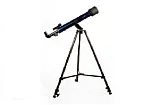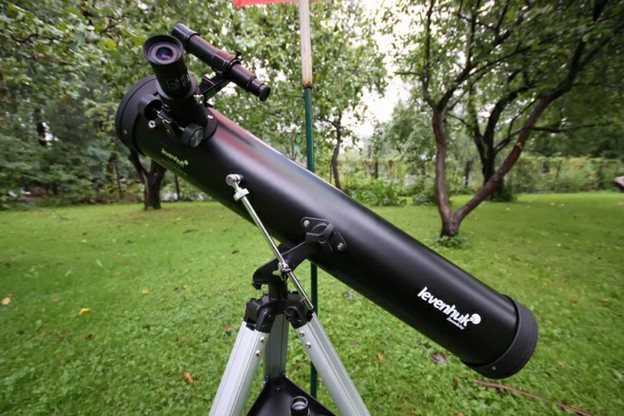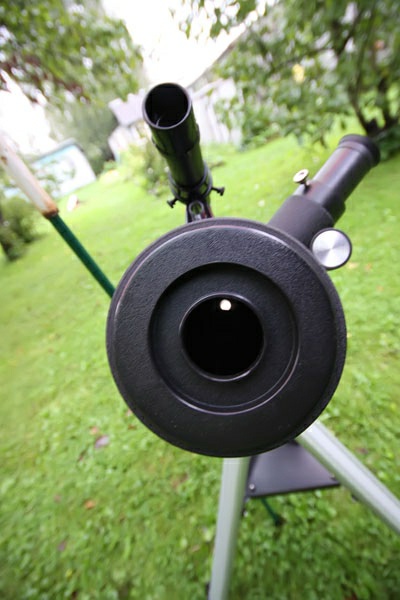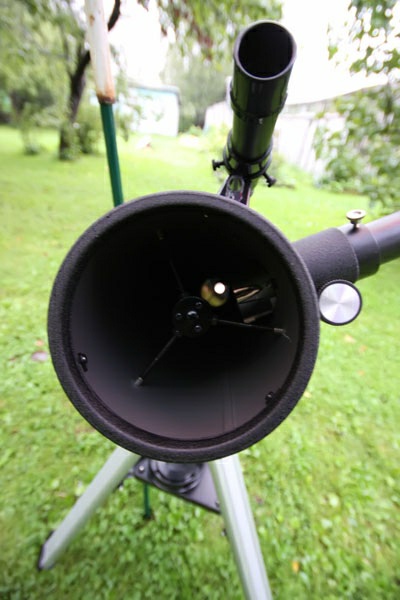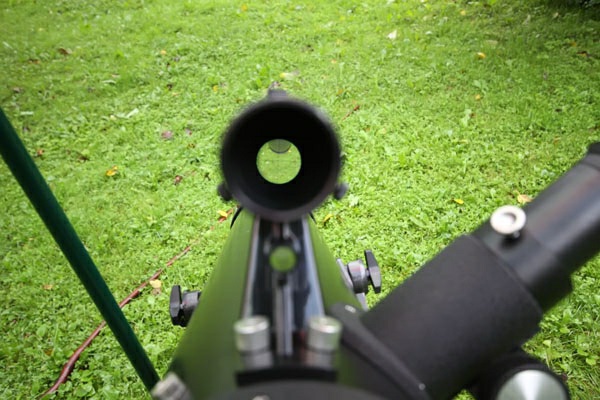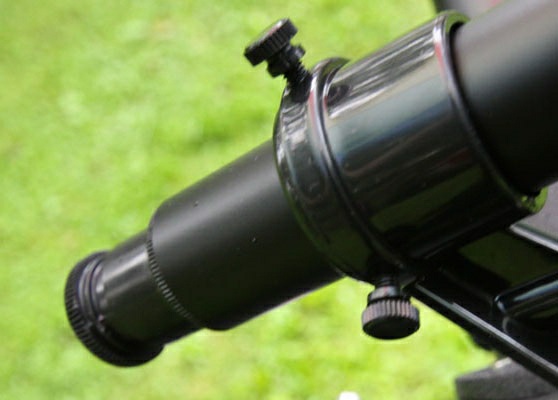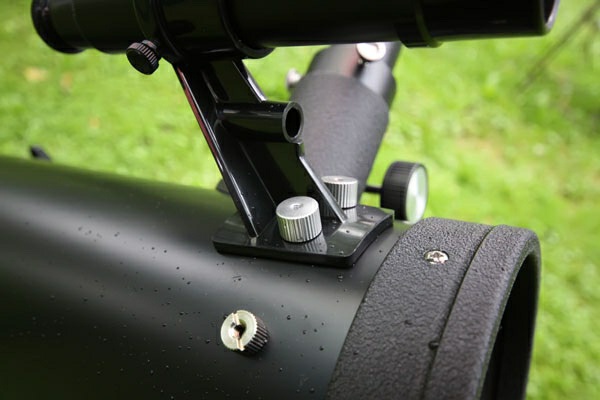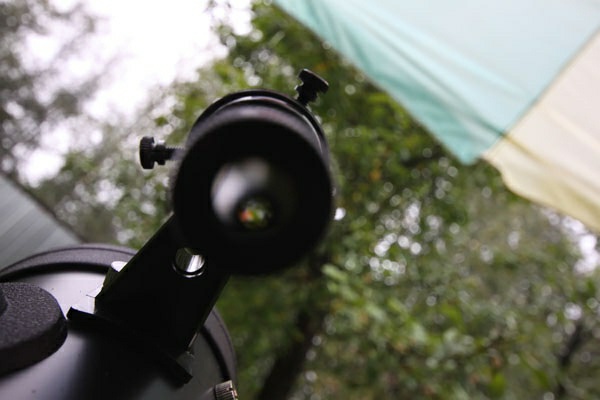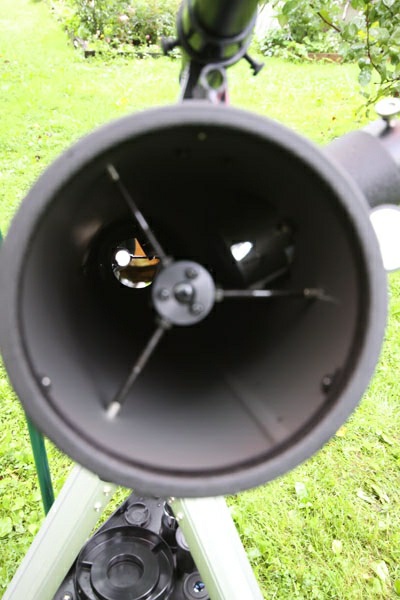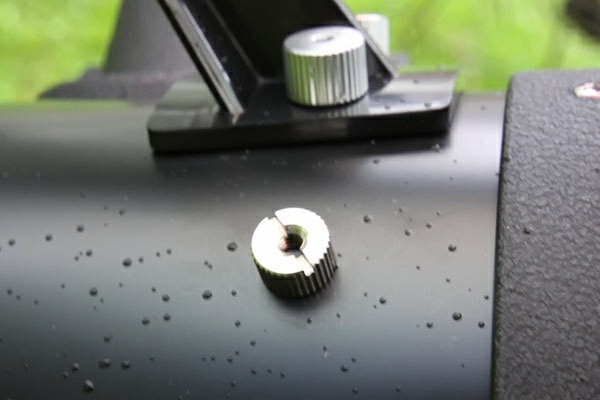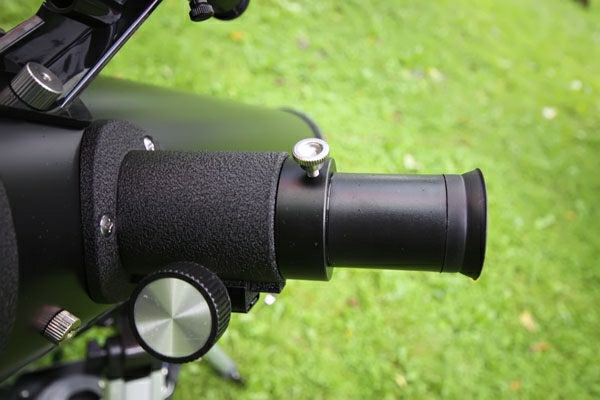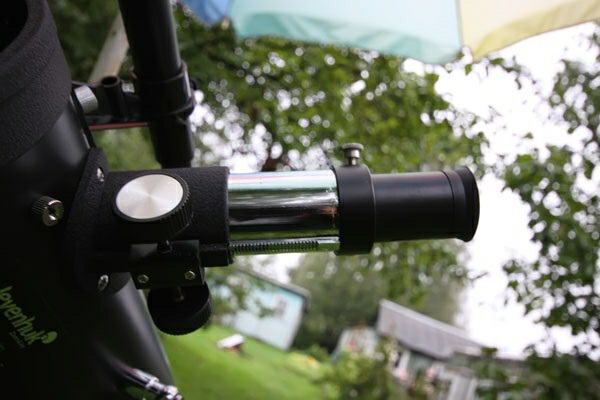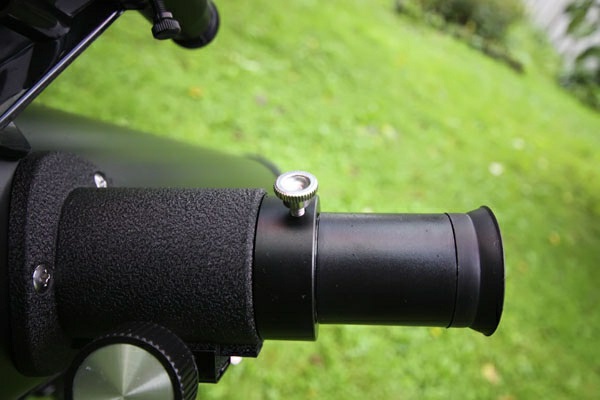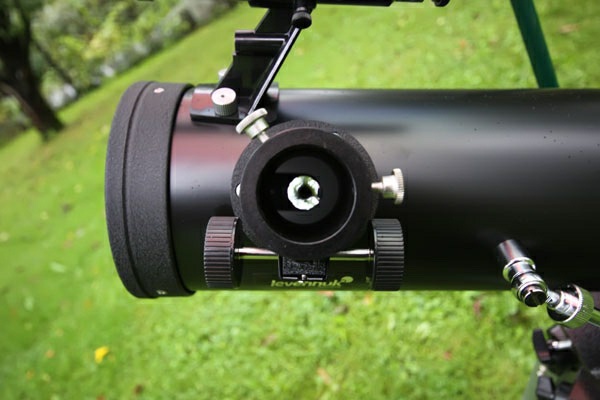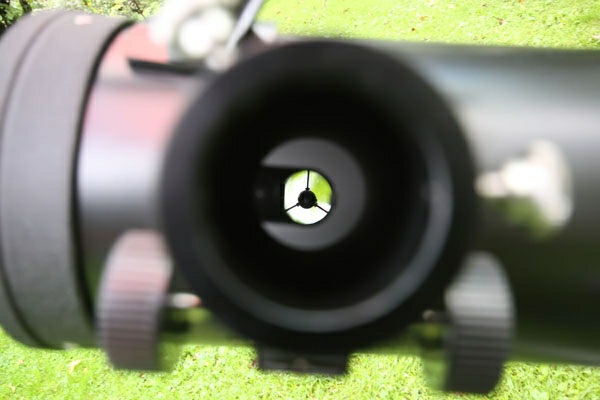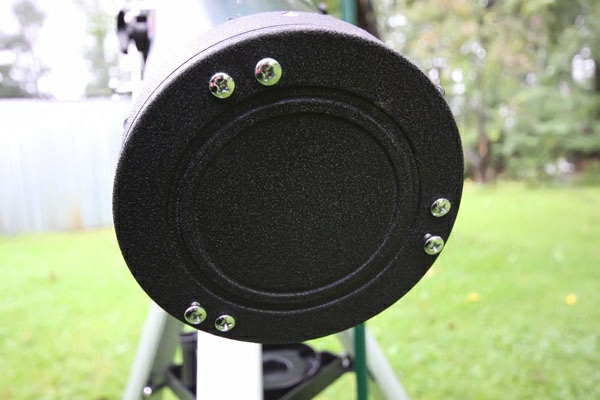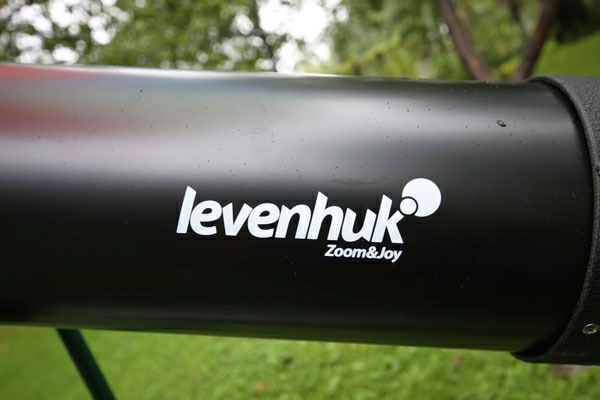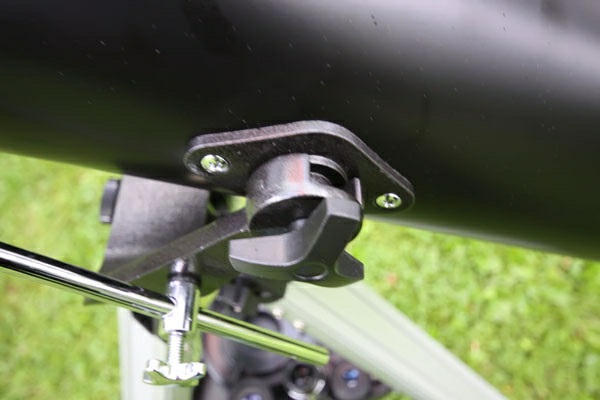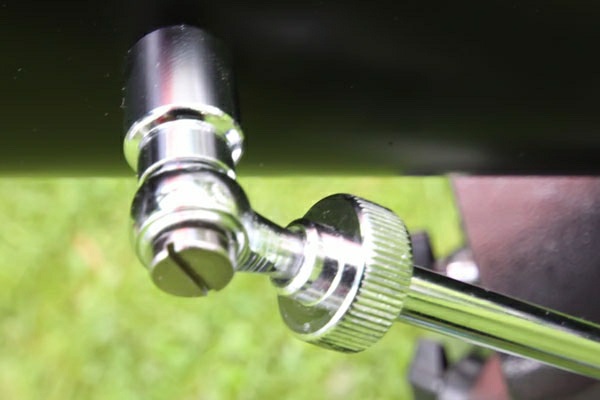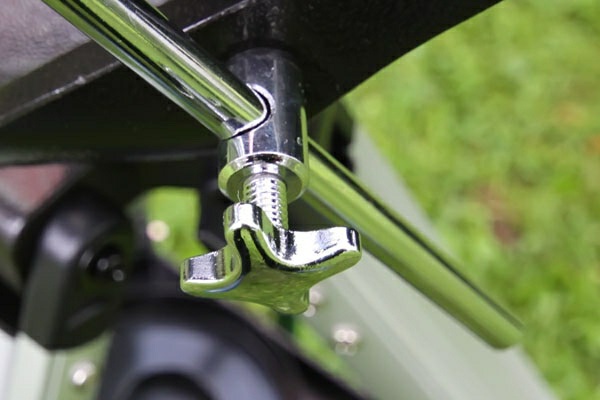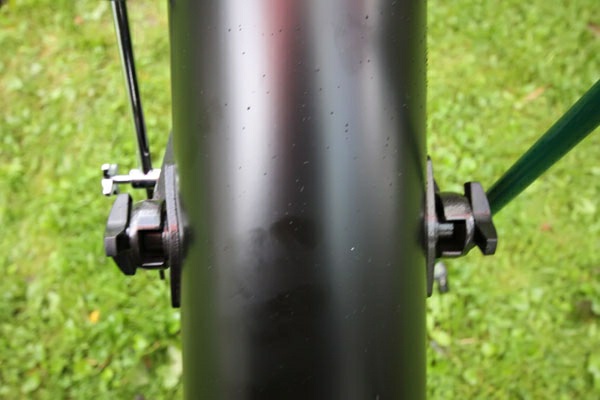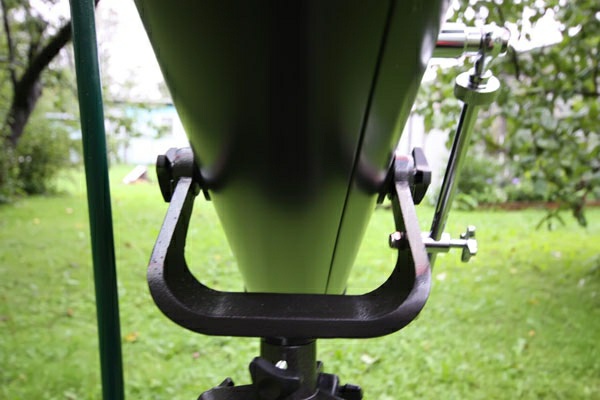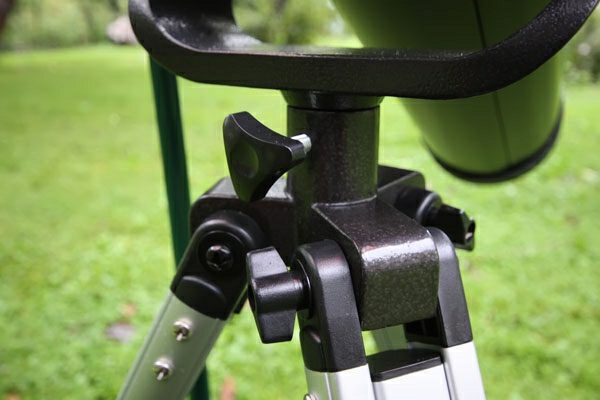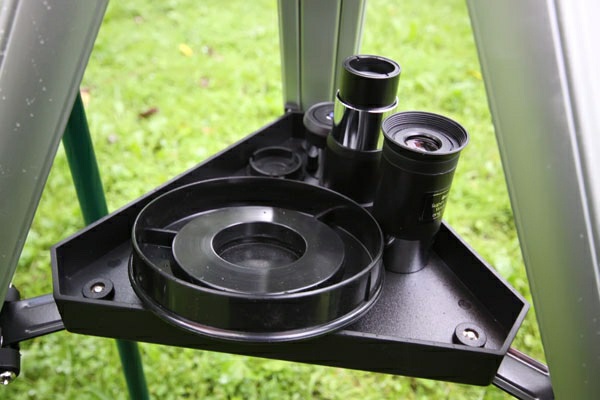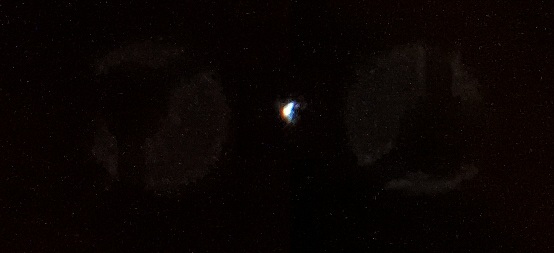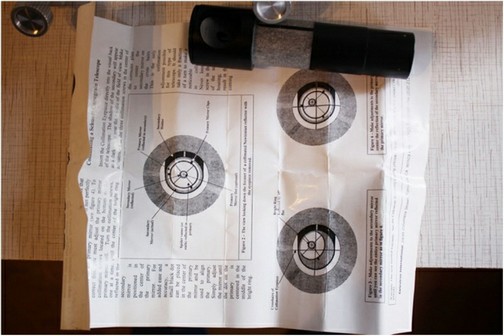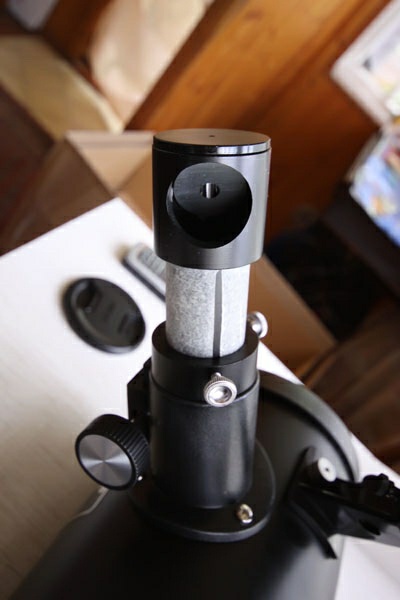First telescope for a young astronomer: the Levenhuk Skyline 76x700 AZ Telescope Review
Levenhuk Skyline 76x700 AZ Telescope is a lightweight and portable Newtonian reflector, designed for visual observations of bright celestial objects, such as the Sun, Moon and Solar System planets. You can also observe bright nebulae, galaxies, and globular and diffuse star clusters, as well as many interesting double and multiple stars.
Levenhuk Skyline 76x700 AZ is very convenient to transport due to its impressively light weight. Package size (LxWxH) is 9.8x37.4x12.0 in or 25.0x95.0x30.5 cm. The key benefits of this telescope model are portability and light weight. Together with its alt-azimuth mount it easily fits into a backpack or a case and can be transported by hand. You can observe from your backyard, balcony, or rooftop. The telescope is designed for young astronomers, students in elementary and middle school. Learning the basics of astronomy stimulates progress in other disciplines, such as mathematics and physics. Children’s enthusiasm and curiosity drive them to explore, learn and discover new things. Even though this telescope doesn’t offer the best optical performance, it will definitely bring lots of joy and fun discoveries to beginning astronomers. The assembly should be carried out in the following sequence: first take the mount and tripod, then attach the optical tube. After finishing your observations, always put the protective cap on the tube and wait until the tube is completely dry and dew-free. The telescope should be stored in a telescope case or a box.
Introduction
The overall view of the Levenhuk Skyline 76x700 AZ Telescope:
The ergonomics and design are truly impressive. The focuser and finderscope are located so they do not interfere with each other. The cap protects the optics from dust and dirt, but you’ll still need to wash the mirror with cold water from time to time. I usually use a cotton swab dipped in acetone for this purpose. And don’t forget to put the cap on when you are not using the instrument.
The cap itself has a small hole in the center. The hole is needed for viewing the Sun through special aperture solar filter; it also ventilates the tube, saving it from dirt and dust falling from the trees. Before you start observing, put the tube in a horizontal position, take the cap off the tube, and then leave the telescope outside for thermal stabilization. If you miss this step, warm air flowing inside the tube may interfere with your observations; it is especially noticeable when you observe at high magnifications.
A 6x optical finderscope with crosshairs allows for quick and easy navigation.
The finderscope is made of plastic. It is attached to the tube with two large screws. For accurate alignment of the finderscope, point the telescope at some distant object, and then align the images provided by the main telescope and the finderscope together, using the adjustment screws on the body. The adjustment screws are also made of plastic.
The sturdy metal rods of the spider inside the tube hold the secondary mirror in place. The spider vanes are used for the secondary mirror offset which can be done during collimation. The secondary mirror cell is equipped with three screws for orientation and one central locking screw. These screws are used for the collimation of the telescope's optical system.
The optical tube is blackened internally to avoid scattered light. The primary mirror is attached to the rim at the end of the tube. This connection has three rubber pads, located at 120 degrees to each other and fastened with screws to the frame. If they are overtightened, you can notice the oval shape of the inside and outside focus star images. In that case you should loosen them a little in order to allow the mirror a certain degree of freedom. Similarly, the outer casing of the tube has three adjustment screws that secure the spider.
The eyepiece node consists of the composite tube of ‘plastic-foil’ type and the rack attached to it. All these components are placed in the metal body. The Levenhuk Skyline 76x700 AZ telescope allows you to use various eyepieces and other accessories with 1.25’’ barrel diameter. The focuser backlash can be regulated with two screws at its base. The focuser knobs are large and very convenient.
The eyepiece adapter has no brass ring inside, and eyepieces are fixed with two screws. Looking through the eyepiece node, you can clearly see the whole inner construction of the tube. With this telescope you get eyepieces with 52° field of view and 10mm and 25mm focal lengths, giving you 70x and 28x magnification, respectively. The optics are made of glass and have a multi-layer coating.
There’s a special metal protection on the back of the primary mirror. The telescope’s alignment is done with three collimation screws.
The telescope is installed on the Alt-azimuth mount (which is designed as a single unit with a tripod). To avoid an arbitrary inclination of the tube, a slow-motion control rod is attached to the telescope tube and the fork.
The fork is shown on the image below. In fact, it is a common lever with a connecting rod on one end.
The other end has a locking knob. The tube is installed between fork arms and is fixed with a pair of screws. Don't overtighten the screws – the construction should be easily manageable, but don't make it too loose either – the tube should not bend under its own weight.
The telescope mount controls are shown on the pictures below.
The tripod height can be adjusted to the observer's height.
Telescope alignment
Telescope alignment is required when the telescope shows something like this:
To align the telescope you will need a so-called "Cheshire Eyepiece". You should check the alignment regularly, and fix it when needed. We also recommend wrapping the Cheshire Eyepiece with adhesive tape for better connection to the eyepiece tube. That guarantees most precise alignment.
Pay special attention to the concentricity of all circles around the center (mark on the mirror) using all adjustment screws that move the optics inside the tube.
After the alignment is done, you can start testing the instrument. Take an eyepiece with high magnification power and point the telescope on a star. You should see a star itself and the diffraction disk around it. If you can see that, the telescope is aligned and ready for use.
Using the Levenhuk Skyline 76x700 AZ telescope, I noticed a slight effect of coma, which disappeared after proper alignment. I should point out the telescope's image quality, which is really good.
| Specifications | |
| Optical design | Newtonian reflector |
| Optics coating | fully multi-coated |
| Primary mirror diameter (aperture), mm | 76 |
| Secondary mirror diameter, mm | 20 |
| Focal length, mm | 700 |
| Highest practical power, x | 152 |
| Focal ratio | f/9.2 |
| Resolution threshold, arcseconds | 1.8 |
| Limiting stellar magnitude | 11.4 |
| Eyepieces | SUPER 10, SUPER 25 |
| Eyepiece barrel diameter | 1.25" |
| Barlow lens | 2x |
| Finderscope | optical, 6x24 |
| Focuser | rack-and-pinion, 1.25" |
| Tripod | aluminum |
| Tripod height (adjustable), in | 26.4-46.9 |
| Mount | AZ1 (altazimuth) |
| Optical tube weight, lbs | 3.88 |
| Usage |
General use product. May be used by kids over 3 years old. |
Visual observations
Levenhuk Skyline 76x700 AZ is ideal for any young or novice astronomer. Your child will spend long and happy hours exploring the Moon, planets, and stars. Levenhuk Skyline 76x700 AZ is perfect for observing the lunar surface with its craters and mountain peaks. This telescope will give your kid the joy of discovery and oneness with the Universe.
This photo was taken by me. Observing the starry skies with small telescopes is always beneficial for your sky orientation and navigation skills. It also brings lots of joy and serenity.
Screening by the secondary mirror is quite large (about 32%) in this model. Therefore, the instrument is great for observing planetary disks, but small details will be lost. The telescope is recommended for use with 1.25’’ eyepieces. Put the telescope outside for half an hour before you use it (for thermal stabilization). Align the finderscope on a distant object. List the celestial objects you want to observe in advance. When preparing the list, don’t forget that the telescope can’t resolve binaries less than 1.8''. The Levenhuk Skyline 76x700 AZ telescope creates clear, sharp images free of chromatic aberrations and ensures true colors.
Summary
Levenhuk Skyline 76x700 AZ Telescope is a quality Newtonian reflector perfect for young astronomy lovers for their first independent observations. The telescope combines great image quality, portability, exceptional ease of use, and a very attractive price. Reflecting telescopes don’t suffer from color distortion (chromatic aberration) even though this problem is quite common among refractors (especially budget models). The kit includes everything you need to get started. Note that its 76-mm mirror gathers 100x more light than the naked eye. That’s why the telescope is able to show you numerous celestial objects such as craters and mountains of the Moon, phases of Venus, Jupiter and its four largest moons, Saturn's rings and Titan, binary stars and star clusters, bright nebulae and galaxies.
The mirrors have a special protective coating, which ensures long service life of the instrument. A reliable, but lightweight optical tube is installed on the alt-azimuth mount with intuitive manual control. The tripod's height is adjustable; it also has a very convenient accessory tray. 6x finderscope allows for quick and easy navigation to desired objects. The telescope comes with two eyepieces with 10mm and 25mm focal lengths, which provide 70x and 28x magnification, respectively. The eyepieces have quality optics made of multi-coated glass. Rack-and-pinion focuser has standard 1.25’’ barrel diameter. This means you can use almost any accessories available on the market and obtain large magnifications up to the telescope's highest practical power of 150x.
Any reproduction of the material for public publication in any information medium and in any format is prohibited. You can refer to this article with active link to levenhukb2b.com.
The manufacturer reserves the right to make changes to the pricing, product range and specifications or discontinue products without prior notice.


